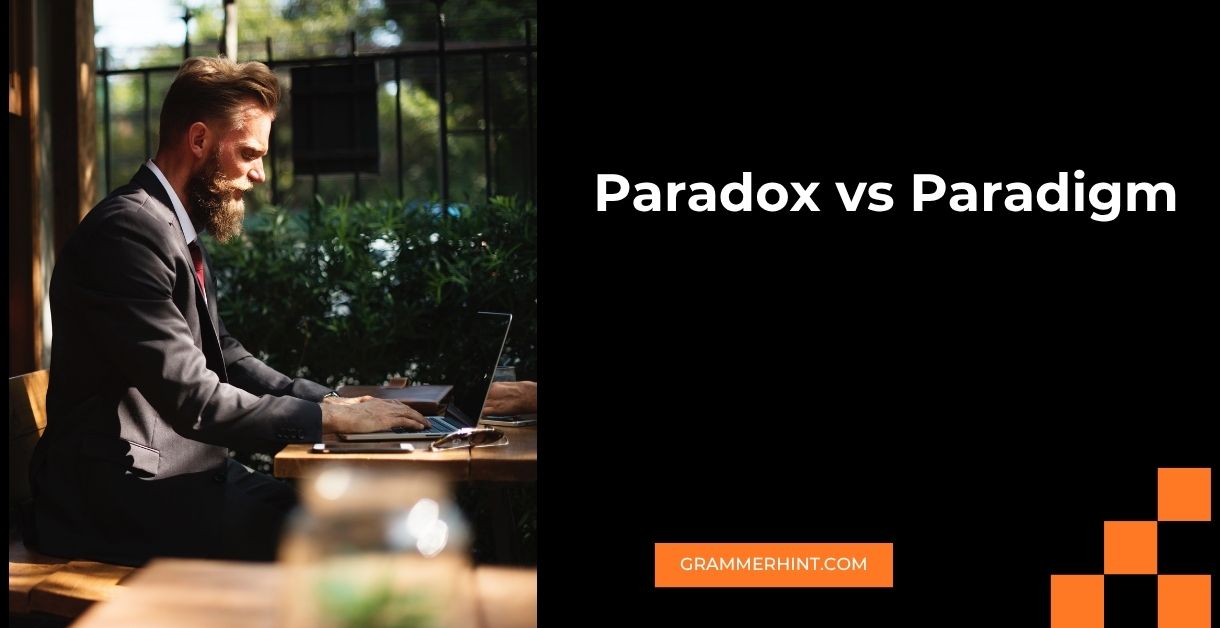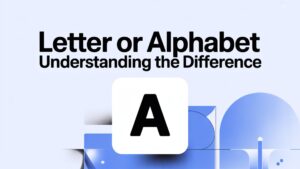In writing, thinking, or speaking, it’s easy to toss around terms like “paradox” and “paradigm” without truly understanding what they mean. Yet these words represent two very different mental frameworks that shape how we interpret the world.
Both are powerful tools in philosophy, psychology, education, business, and communication. But the confusion between them can lead to semantic writing errors or even serious misunderstandings.
This article will help you settle the paradox vs paradigm debate for good, offering clear definitions, real-world examples, email scenarios, and practical tips to use them correctly.
What is Paradox?
A paradox is a statement or situation that contradicts itself, yet might still be true. It challenges your logic, your assumptions, and sometimes, your entire belief system.
Think of a paradox as a mental puzzle an idea that forces you to pause and reconsider what you thought you knew.
At its core, a paradox is about contradiction, often exposing flaws in our cognitive models or mental assumptions.
Examples
Here are some famous examples of paradoxes that have fascinated thinkers for centuries:
- Liar Paradox: “This sentence is false.” If it’s true, then it’s false. But if it’s false, then it must be true.
- Barber Paradox: A barber shaves everyone who does not shave themselves. So who shaves the barber?
- Bootstrap Paradox: A time traveler brings back a book from the future. Who wrote the original?
- Ship of Theseus: If you replace every part of a ship, is it still the same ship?
- Grandfather Paradox: If you travel back in time and prevent your grandfather from meeting your grandmother, how could you exist?
- Zeno’s Paradoxes: Achilles can never overtake a tortoise if the tortoise has a head start, no matter how fast he runs.
- Schrödinger’s Cat: A cat inside a box is both alive and dead until observed.
- Paradox of Thrift: In economics, if everyone saves money during a recession, overall demand will fall, worsening the economy.
- Paradox of Choice: Too many options can make decision-making harder, not easier.
- Paradox of Tolerance: If a society is completely tolerant, it may allow intolerance to destroy that tolerance.
These aren’t just quirky brainteasers—they’re deeply embedded in philosophical reasoning, scientific theories, and even urban planning or healthcare ethics.
What is Paradigm?
A paradigm is a shared set of beliefs, assumptions, or cognitive models that defines how people think about a particular subject. It creates a framework for perception and interpretation.
In simpler terms, a paradigm is the lens through which we see and understand the world.
Paradigms shape how societies operate, how scientists explore reality, and how businesses make strategic decisions.
Examples
Here are some examples of paradigms across different domains:
- Scientific Paradigm: Newtonian physics was the dominant model until Einstein introduced relativity.
- Medical Paradigm: Moving from treating symptoms to holistic, preventative healthcare.
- Business Paradigm: Shifting from product-centered to customer-centered strategies.
- Educational Paradigm: Transitioning from rote learning to experiential, student-led models.
- Design Paradigm: UX design now prioritizes human behavior over aesthetic alone.
Each of these represents a paradigm shift—a major change in thinking or operation.
Origins of Paradox
The word “paradox” comes from the Greek paradoxon, meaning “contrary to expectation.” It has long been a central concept in philosophy, especially in logic and epistemology.
Many paradoxes arise when self-reference, nonlinear logic, or hidden assumptions enter our reasoning. Philosophers like Zeno, Epimenides, and even Kant used paradoxes to explore the limits of knowledge.
Origins of Paradigm
“Paradigm” originates from the Greek paradeigma, meaning “example” or “pattern.” It became widely popular in the 1960s thanks to Thomas Kuhn’s book The Structure of Scientific Revolutions.
Kuhn argued that science doesn’t evolve linearly, but rather through revolutionary changes—paradigm shifts.
Since then, the word has migrated into business, law, leadership, software development, and even urban planning.
Paradox vs Paradigm: The Differences
Let’s get to the heart of the paradigm vs paradox confusion. Here’s a table comparing them:
| Feature | Paradox | Paradigm |
|---|---|---|
| Definition | A contradiction that may reveal truth | A model or mental framework |
| Purpose | To question assumptions | To guide thinking or behavior |
| Nature | Contradictory | Structured |
| Effect | Causes cognitive dissonance | Offers a stable framework |
| Example | “This statement is false.” | Newtonian physics |
So, in simple terms:
- A paradox exposes flaws in your thinking.
- A paradigm provides a way to think.
One is a logical conflict, the other a framework of perception.
How To Use Paradox and Paradigm In Sentences

Using “Paradox” in a Sentence:
Here’s a sentence using paradox correctly:
“It’s a paradox that standing still can sometimes help you move forward in life.”
Another example in an email:
Hi David,
I know it sounds like a paradox, but cutting back on our marketing might actually improve our brand perception. Let’s discuss this further on Thursday.
Best,
Laura
Using “Paradigm” in a Sentence:
A great paradigm in a sentence example:
“The pandemic forced a shift in the educational paradigm, emphasizing digital over in-person learning.”
An email example:
Hi Melanie,
I believe we’re working under an outdated paradigm that prioritizes product features over user needs. I’d like to propose a shift during our Q3 roadmap session.
Cheers,
Ron
Examples Of Paradox and Paradigm Used In Sentences

Examples of “Paradox” in Sentences:
- “The more you try to control everything, the less control you actually have. That’s the paradox.”
- “Her behavior presented a strange paradox: confident yet deeply insecure.”
- “He believed in absolute freedom, but enforced strict rules—a political paradox.”
“Paradigm” in Sentences Example:
- “The current paradigm of consumption is not sustainable in the long term.”
- “We’re shifting our leadership paradigm to empower employees rather than micromanage them.”
- “Cognitive paradigms influence how we process reality.”
Common Mistakes to Avoid
Mistake #1: Using Paradox and Paradigm Interchangeably
These words are not synonyms. Confusing a contradiction for a framework leads to unclear writing.
Mistake #2: Overusing Paradox and Paradigm
These terms lose impact if thrown around too often. Use them when they actually add value.
Tips for Avoiding These Mistakes
- Ask: Am I describing a contradiction (paradox) or a guiding structure (paradigm)?
- Use supporting examples to clarify your meaning.
- Avoid vague phrases like “in today’s paradigm” unless you explain what that paradigm is.
Context Matters
Paradox
psychology, paradoxes highlight cognitive dissonance. In philosophy, they drive abstract reasoning. In communication, they encourage deeper interpretation.
Paradigm
business, paradigms shape entire strategies. In software development, they influence how code is structured. In healthcare, they redefine patient care.
Exceptions to the Rules
Sometimes, a single idea can seem like both a paradigm and a paradox. This is especially true in cultural worldviews where different belief systems overlap.
This blending is what we call the paradigm paradox: when a prevailing mental model contains internal contradictions, yet still guides behavior.
Conclusion
To recap:
- A paradox is a contradiction that forces rethinking.
- A paradigm is a mental framework that guides thinking.
Understanding the difference between paradox and paradigm helps you write with clarity, speak with precision, and think more critically.









